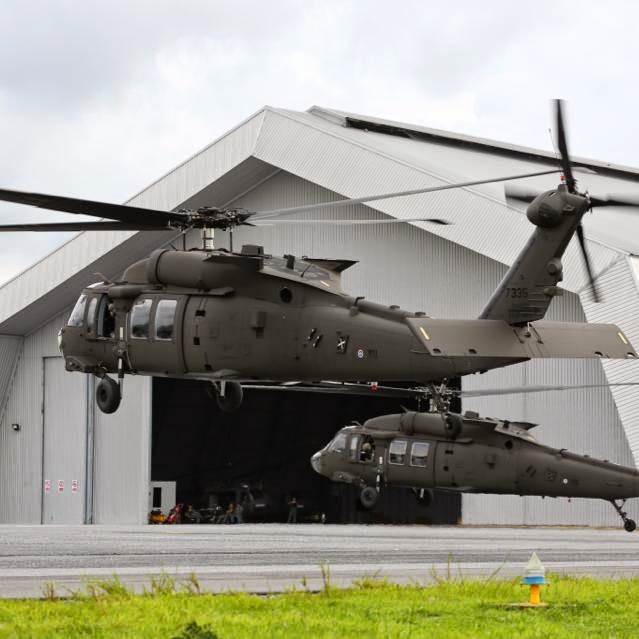Flying High: UH 60 Helicopter Security Protocols You Should Know
Flying High: UH 60 Helicopter Security Protocols You Should Know
Blog Article
Browsing Uh 60 Helicopter Regulations and Conformity Needs

Regulatory Structure Summary
The governing structure governing UH-60 helicopter operations incorporates a complex collection of requirements and policies established by air travel authorities. These laws are created to make sure the risk-free and efficient procedure of UH-60 helicopters in various atmospheres. The Federal Air Travel Management (FAA) plays a central duty in developing and implementing these guidelines, which cover a vast array of operational facets, consisting of airworthiness standards, pilot certifications, upkeep demands, and operational treatments.
Compliance with these regulations is necessary for helicopter drivers to preserve the highest levels of safety and security and operational stability. Failure to stick to these guidelines can lead to major effects, including mishaps, injuries, and governing assents. For that reason, helicopter drivers should remain informed regarding the most recent governing growths and make certain that their procedures remain in complete compliance with all appropriate guidelines and criteria.
Airworthiness Inspections and directives
In the middle of the governing structure regulating UH-60 helicopter operations, an important emphasis lies on conformity with Airworthiness Directives and performing extensive inspections to support security requirements and operational integrity. Airworthiness Instructions (ADs) are provided by aviation authorities to deal with risky problems in airplane, consisting of the UH-60 helicopter, and required details activities to be taken by operators or proprietors. Conformity with Advertisements is required, and failure to follow these directives can cause major effects, including grounding of the aircraft.
Regular examinations are vital to guaranteeing the airworthiness of UH-60 helicopters. By adhering to a rigorous examination routine, drivers can detect and resolve potential concerns immediately, thus improving the security and reliability of UH-60 helicopter operations.
Pilot Certifications and Training

Pilot training for UH-60 helicopters is thorough and covers a broad array of topics, including airplane systems, emergency procedures, navigation, and mission-specific training. Furthermore, pilots undertake simulator training to exercise here numerous emergency situations in a regulated atmosphere. This training assists pilots establish the essential abilities to handle tough circumstances effectively.


Furthermore, continuous training and expert growth are crucial for UH-60 pilots to remain current with the most up to date guidelines, modern technology, and ideal methods. By buying pilot certifications and training, operators can improve safety and security, enhance performance, and ensure conformity with regulatory requirements in the operation of UH-60 helicopters.
Functional Limitations and Needs
Pilot certifications and training act as the structure additional reading for recognizing the functional restrictions and needs connected with UH-60 helicopter procedures (uh 60). These operational constraints are established to ensure the safety of the staff, travelers, and the airplane itself. Operational restrictions may include variables such as weather problems, weight restrictions, altitude constraints, and functional borders. It is vital for pilots to be fluent in these constraints to make enlightened choices throughout trip procedures. In addition, compliance demands, such as adhering to particular trip paths, communication methods, and emergency treatments, are essential for keeping operational safety and security and regulatory conformity. Pilots need to stay present with all functional limitations and demands through regular training, instructions, and assesses to alleviate risks and make certain efficient and safe UH-60 helicopter procedures. By focusing on adherence to these operational guidelines, pilots can enhance the general safety and security and efficiency of their goals while upholding regulative standards.
Emergency Treatments and Compliance Testing
Reliable emergency situation treatments and thorough conformity testing are essential components of preserving operational safety and regulative adherence in UH-60 helicopter procedures. Emergency situation procedures incorporate procedures for numerous scenarios, including engine failures, fires, hydraulic problems, and a lot more. Pilots and staff members need to be fluent in these treatments to respond swiftly and effectively in emergencies. Regular compliance screening ensures that the helicopter satisfies all regulatory requirements set forth by air travel authorities. This testing includes thorough evaluations, checks, and assessments to confirm that the aircraft is airworthy and in compliance with all applicable policies.
Compliance screening additionally encompasses equipment onboard the UH-60, such as interaction systems, navigating tools, and security gear. Guaranteeing that all devices is operating properly and meets governing standards is vital for safe operations. In addition, conformity testing might involve simulations of emergency circumstances to evaluate the crew's reaction and the helicopter's efficiency under stress and anxiety. By prioritizing emergency helpful resources situation treatments and compliance testing, UH-60 drivers can reduce dangers and show their commitment to safety and regulative compliance.
Conclusion
Finally, adherence to regulative framework, conformity with airworthiness instructions, pilot qualifications and training, operational limitations, and emergency situation treatments are essential for browsing the laws and demands of operating a UH-60 helicopter. uh 60. It is vital for drivers to prioritize safety and security and ensure complete compliance with all suitable guidelines to keep the airworthiness and functional integrity of the aircraft
Navigating the regulative landscape bordering UH-60 helicopter procedures requires a nuanced understanding of the elaborate internet of rules and compliance needs.Compliance with these laws is essential for helicopter operators to maintain the greatest levels of safety and operational honesty.Among the governing structure governing UH-60 helicopter procedures, a vital emphasis lies on conformity with Airworthiness Directives and performing comprehensive inspections to support safety and security criteria and functional reliability.Efficient emergency situation procedures and thorough conformity testing are important components of keeping functional security and regulative adherence in UH-60 helicopter procedures. Normal compliance testing guarantees that the helicopter meets all governing demands set forth by aviation authorities.
Report this page